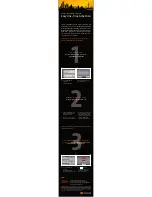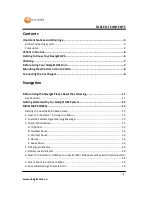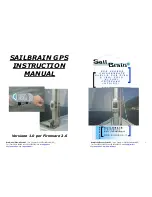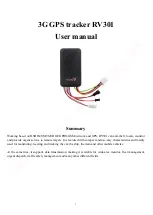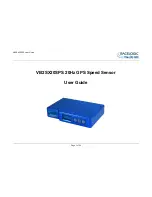
JP14-R-LP & JP14-Q-LP F
ALCOM
GPS R
ECEIVERS
V
ERSION
1.0.0
2 SECURITY
This chapter contains important information for the safe and reliable use of the GPS
receiver. Please, read this chapter carefully before starting to use the GPS receiver.
2.1 General information
The Global Positioning System uses satellite navigation, an entirely new concept in
navigation. GPS has become established in many areas, for example, in civil aviation
or deep-sea shipping. It is making deep inroads in vehicle manufacturing and before
long everyone of us will use it this way or another.
The GPS system is operated by the government of the United States of America,
which also has sole responsibility for the accuracy and maintenance of the system.
The system is constantly being improved and may entail modifications effecting the
accuracy and performance of the GPS equipment.
2.2 Restricted use
Certain restrictions on the use of the GPS receiver may have to be observed on
board a plane, in hospitals, public places or government institutions, laboratories etc.
Follow these instructions.
2.3 Children
Do not allow children to play with the GPS receiver. It is not a toy and children could
hurt themselves or others. The GPS receiver consists of many small parts which can
come loose and could be swallowed by small children. Thoughtless handling can
damage the GPS receiver.
2.4 Operation/antenna
Operate the GPS receiver with an antenna connected to it and with no obstruction
between the receiver and the satellite.
Make absolutely sure that the antenna socket or antenna cable is not shorted as this
would render the GPS receiver disfunctional.
Do not use the receiver with a damaged antenna. Replace a damaged antenna
without delay. Use only a manufacturer-approved antenna. Use only the supplied or
an approved antenna with your GPS receiver. Antennas from other manufacturers
which are not authorized by the supplier can damage the GPS receiver.
Technical modifications and additions may contravene local radio-frequency
emission regulations or invalidate the type approval.
Authorized GPS antennas:
FAL-ANT-3
(active antenna)
2.5 Electrostatic Discharge (ESD)
These GPS receivers contain class 1 devices. The following Electrostatic Discharge
(ESD) precautions are recommended:
-
Protective outer garments.
-
Handle device in ESD safeguarded work area.
-
Transport device in ESD shielded containers.
-
Monitor and test all ESD protection equipment.
-
Treat the GPS receivers as extremely sensitive to ESD.
This confidential document is the property of FALCOM and may not be copied or circulated without permission.
Page 9

























